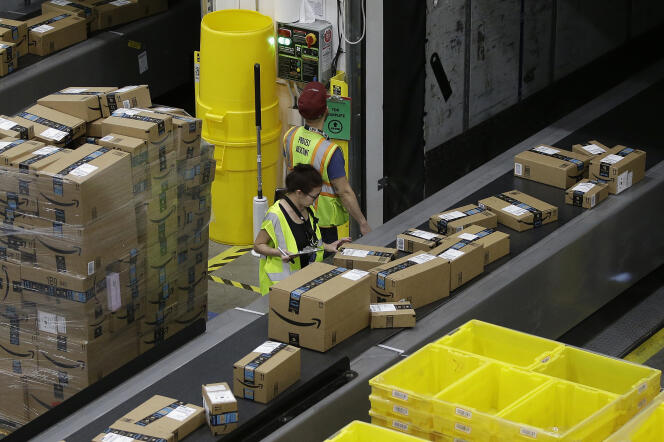The original document was heavily redacted, but its new version, published Thursday, November 2, sheds new light on what Amazon is accused of: the Federal Trade Commission (FTC), the American competition authority, has published a clarified version of its complaint against the e-commerce giant. -commerce for “abuse of dominant position”, filed five weeks earlier. The FTC notably accuses the company of exercising illegal control over prices thanks to an algorithm it made, called “Project Nessie”.
According to the FTC, this tool allows the company to predict whether competing e-commerce sites are likely to align when Amazon decides to increase the price of one of the products it sells itself. For example, if Amazon sells sneakers from a well-known brand, and it is considering increasing their prices, this algorithm can predict whether other e-commerce sites will also increase theirs. This information allowed the e-commerce giant to periodically increase the prices of certain items without risking displaying higher prices than its competitors, which would have scared away certain customers.
In its complaint, the FTC argues that“Amazon used Project Nessie to extract more than a billion dollars directly from Americans’ pockets, (…) depriving households of more affordable options » for thousands of products. The FTC gives more precise figures for different periods, taken from internal Amazon estimates to which it had access. In 2018, for example, the Nessie project would have allowed the company to increase its profits by 334 million dollars (311.2 million euros), for a net profit of 10 billion dollars (9.3 billion euros) that year.
Do not attract suspicion
The FTC estimates that Amazon used this tool from 2014 to 2019 and that the company was aware of the legal limits of its tool, since, according to the government agency, it was careful to vary the products concerned so as not to attract customers. suspicions and to take short breaks, particularly during “Black Friday”, a period when“media attention is increased”. Conversely, the FTC accuses Amazon of having stepped on the accelerator at other times, notably in 2017, a year when its profitability was declining.
If the Nessie project is currently on hiatus, it would not be permanently abandoned. The FTC warns that Amazon studied, in 2020 and 2021, the possibility of conducting experiments to improve its effectiveness. And in 2022, Amazon Stores CEO Doug Herrington suggested Nessie could be revived to boost profits.
Amazon refutes all of these claims. At Worldthe company claims: “Nessie was used to try to prevent our price matching system leads to unusual results where prices are so low as to become unsustainable. The project (…) When it didn’t work as expected, we abandoned it several years ago. »
The FTC considers employment of the Nessie Project to be a “unfair method of competition” calling for sanctions, on which it remains vague. According to her, this tool is part of a larger arsenal used by the platform to inflate prices, increase commissions collected from sellers, prevent merchants from offering better services and sanction those who try to sell cheaper . According to the agency, some of these “unfair” processes are still active today.
